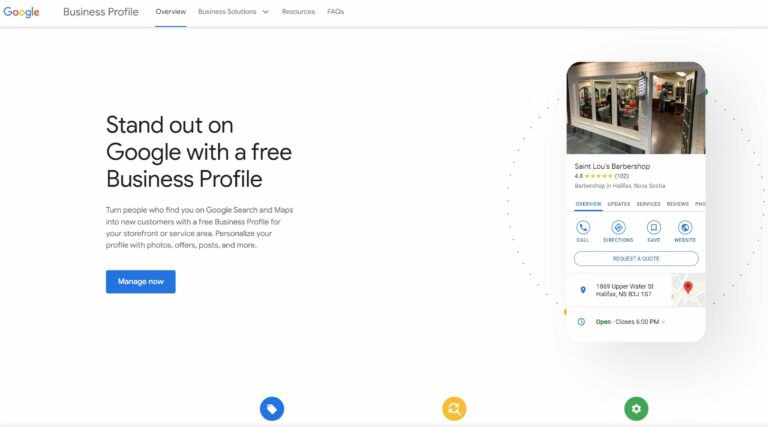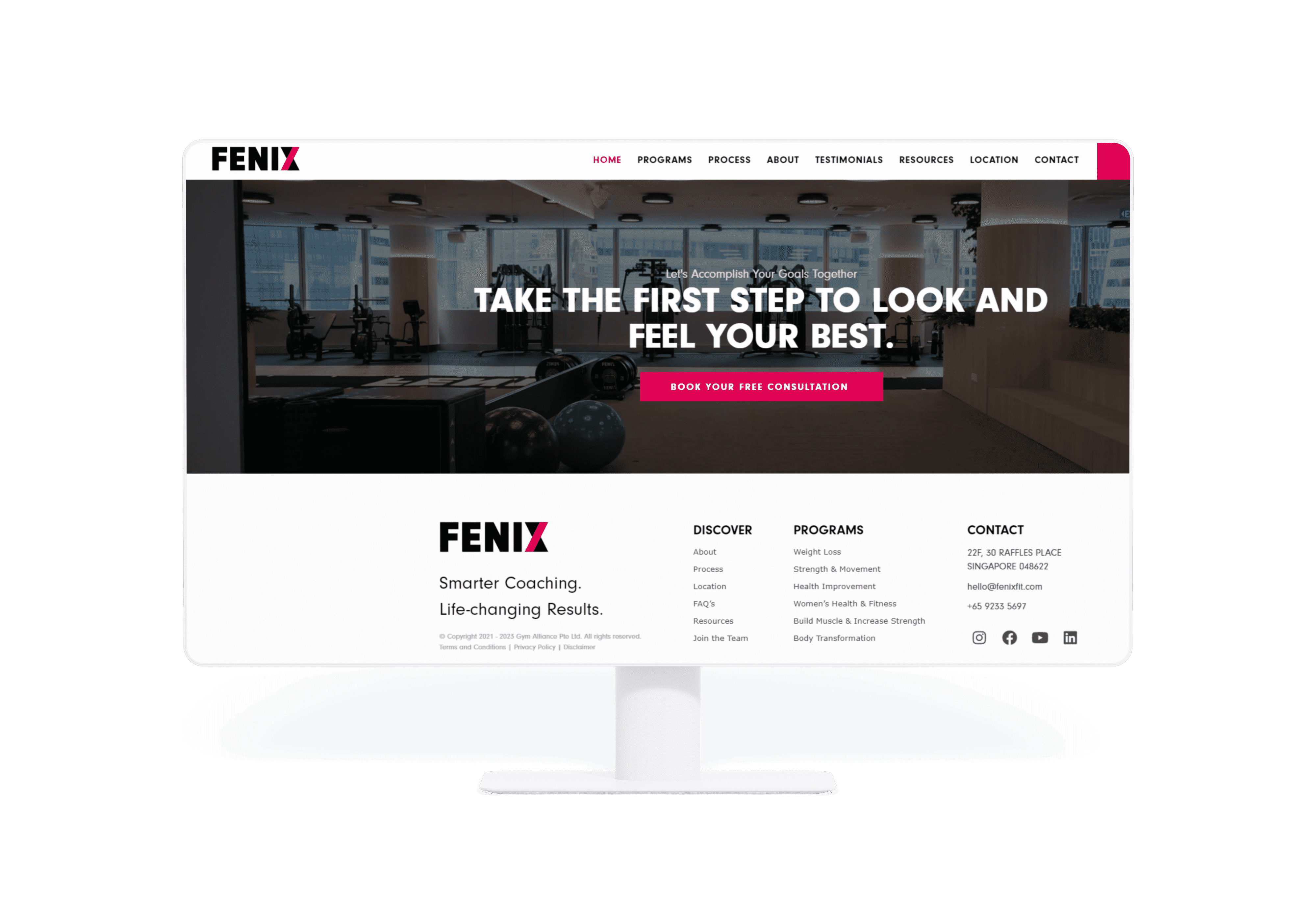The Super Guide To Google's Local Search Ranking Factors
Dominate Your Competition and Rule Your City
As a Vancouver-based digital marketing agency, we understand the importance of local search rankings for businesses looking to thrive in today’s digital landscape. Google’s local and organic search results play a significant role in driving traffic and revenue for local businesses.
To succeed in this arena, it’s crucial to understand how Google’s algorithms work and how to optimize your strategy accordingly. That’s where local search ranking factors come into play. In this article, we’ll cover everything you need to know about these factors, so you can help the businesses you market achieve high visibility and maximum profitability. Let’s dive in!
Background
Before we delve into the specifics of local search ranking factors, it’s essential to provide a vital caveat. It’s important to note that there is no one-size-fits-all solution when it comes to ranking factors. Google treats results differently based on factors like the market, industry, platform, and device.
For instance, a local SEO agency working with quick-serve restaurants may find that Google places a high weight on the “popular times” factor, while another agency working with personal injury lawyers may believe that factor is far less important than the authority of the links lawyers earn.
Additionally, different types of search engine results have distinct sets of calculations governing them. For example, the same business may rank differently in Google Maps than they do on Bing Search, Apple Maps or organic results.
Furthermore, it’s crucial to recognize that research into local search ranking factors is theoretical rather than definitive. Google’s algorithms are proprietary, and local SEOs rely on their work experience rather than insider knowledge of the algorithms. Therefore, all discussion of local search ranking factors should be viewed as observations rather than set-in-stone facts.
In summary, we’ll be discussing local search ranking factors in this article, but it’s up to you to determine how each factor comes into play for a specific business within a particular type of Google results to get you ranking at the top.
1) Google Business Profile Factors

Local search ranking factors can be categorized into eight main types, and the first one is Google Business Profile Factors. This category includes everything that can be found on the Google Business Profile (GBP), with the exception of reviews, which are covered separately.
Business Title
One of the factors that strongly affects GBP rankings is the Business Title. The inclusion or absence of a complete or partial search phrase in the business name can impact its rank. For example, if someone searches for “electric cars Vancouver,” a business named Vancouver Electric Car Superstore may be favored over Ben’s Auto Lot in the rankings.
Categories
Another factor in this category is Categories. Businesses can select up to ten categories for their Google Business Profile, and selecting relevant categories can impact the search results. For instance, if someone is looking for a place to charge their electric vehicle, a business categorized as “electric vehicle charging station” is more likely to be brought up than one simply categorized as “gas station.”
Other factors
The strength of the Website URL linked to from the GBP is another significant factor. If the linked page has a lot of links and authority, the listing may rank higher than if it was pointing to an obscure page on the website with little authority.
While other elements on the GBP may not directly impact rank, they can still play a critical role in conversions and sales. These elements include photos, posts, Q&A, bookings, messaging, hours of operation, popular times, and more. Studies are continually ongoing to determine the impact of such elements on rank, and it’s recommended to conduct your own research to see if any particular field appears to be influencing rank in your market.
2) Review Factors
When it comes to local search ranking, reviews and customer sentiment play a significant role. Reviews are written by customers and reflect their experiences with a local business. Google pays attention to 3 main types of reviews:
Google-based Reviews – These are reviews and star ratings left directly on a Google Business Profile.
Third-Party Review Sites – These are reviews left on sites like Yelp or TripAdvisors, as well as professional reviews on sites such as Zagat.
First-Party Reviews on Your Website – These are reviews and testimonials that a local business facilitates publication of on their own website.
There are several nuances to reviews that can impact search engine rankings. For example, recency is important, as recent reviews are considered more relevant than older ones. Velocity, or the frequency at which a business receives new reviews, also plays a role. Diversity of reviews across multiple platforms is also important.
The authority of the reviewer, such as a professional reviewer or a member of a program like Google’s Local Guides, can carry more weight than a first-time review from a random member of the public.
Finally, the format of the review, such as whether it is text-based or just a star rating, can also impact its impact on rankings.
3) Citation Factors
Citation factors play an important role in local search rankings. There are 2 types of online mentions: structured and unstructured citations.
Structured citations are formal listings of local businesses on platforms like Yelp or TripAdvisor, while unstructured citations can be found on various types of websites, including blogs and news sites.
Both types of citations are important, but structured citations are believed to have a greater impact on local rankings. Some of the factors that Google takes into account when it comes to citations are accuracy, distribution, quality, and relevance.
- Accuracy refers to whether the basic contact information for your business is consistent across all your citations, including your website.
- Distribution refers to the number of platforms listing or citing your business,
- Quality measures the authority of those platforms.
- Relevance is whether the platforms that list or refer to your business are relevant to your industry or locality.
It’s important to have citations on both formal directories and relevant industry-specific sites.
4) On-page Factors
In this section, we will discuss the website elements that help support the visibility of a business in both local and organic search results. The on-page factors that are believed to impact a local business’s rank include:
- Domain Authority – Domain Authority (DA) is a score that predicts a website’s likelihood of ranking in search engine result pages (SERPs). A local business with high domain authority is more likely to achieve higher rankings in both the local and organic results compared to one with low domain authority.
- Page Authority – Page Authority is similar to Domain Authority, but instead refers to the strength of a single page rather than an entire website. A Google Business Profile that links to a page on the company’s website with high Page Authority should generally rank better than if the page being linked to has low authority.
- NAP – Name, Address, Phone Number (NAP) should be prominently displayed on a local business’s website and should match the NAP that has been published on their Google Business Profile.
- Quality – A local business that publishes high-quality, authoritative content that is free from spelling and grammatical errors is likely to rank higher than a business with poor-quality content. This is also why you should be extremely careful about outsourcing, and you should be working with English-speaking, local marketing agencies.
- Technical and Security Factors – To remove ranking obstacles, a local business should ensure that its website is mobile-friendly, secure, and renders correctly across various devices. The website should be free from threats such as malware. Additionally, a website’s robots.txt configuration and page redirection must be handled carefully to enable search engines to crawl, index, and trust the site.
- Optimization – The website’s text content, tags, and internal links should reflect the keyword phrases used by searchers when looking for what the business offers. For instance, if a searcher is looking for “best cars,” then a local car dealer that has created a well-optimized page for this search phrase is likely to rank higher than a competitor that has not optimized their page.
For example, a local tea store in Vancouver (for example) that has a mobile-friendly website with a high domain authority and well-optimized pages that reflect the keyword phrases used by searchers looking for varieties of tea in their area is likely to rank higher in search results than a competitor with a poorly optimized website and low domain authority.
5) Link Factors
Links are crucial for improving a website’s visibility in both local and organic search rankings. There are 2 types of links: internal and inbound.
Internal links are links that lead visitors from page to page within a website, while inbound links are links that come from third-party sites to your website.
The factors that are believed to impact local and organic rankings with respect to links are:
- Domain Authority – The likelihood of a website ranking in search engine results is determined by its domain authority. A business with a high domain authority is more likely to receive a ranking boost than a business with a low domain authority.
- Relevance – The linking site should have a clear relationship with the site being linked to. For instance, a magazine about green energy linking to an EV charging station is more relevant than a website about cosmetics or dog grooming linking to the same site.
- Page Authority – Just like domain authority, page authority refers to the strength of a particular page that is linking to your website.
- Quantity – The number of inbound and internal links pointing to a particular page on a website determines its ranking potential.
- Diversity – Inbound links from a variety of relevant websites are more beneficial than those from just a few platforms.
- Link Anchor Text – The text that visitors click on when clicking a link should be relevant and descriptive, rather than generic.
By focusing on these link factors, businesses can improve their online presence and rank higher in search engine results, both locally and organically.
6) User Behavioural Factors
Behavioral factors refer to how internet users interact with your online assets and can impact your local and organic rankings. Some of the key behavioral factors that can affect your rankings include:
- Click-Through Rate (CTR) – This is the rate at which people click on your listing or page when it appears in the search results. A higher CTR signals to Google that your content is relevant and of interest to the public.
- Dwell Time – Dwell time refers to the amount of time people spend on your website or page after clicking through from the search results. A longer dwell time indicates that your content is engaging and informative.
- Clicks-for-Directions – This factor measures how many people are clicking on the “directions” button on your listing to get directions to your location. This can be an indicator of convenience and accessibility.
- Clicks-to-Call – This factor measures how many people are clicking on the “call” button on your listing to contact you directly. This can indicate that your business is reliable and trustworthy.
- Clicks-to-Site – This factor measures how many people are clicking through from your listing to your website. This can indicate that your website is informative and engaging.
- Other behavioral factors that Google may consider include how people interact with your photos, reviews, posts, menus, Q&A, bookings, products, and more. In addition, Google may be interested in how people interact with your website (bounce rate), such as whether they stay on it once they click through, visit additional pages, or immediately leave.
While these behavioral factors may not have a direct impact on your rankings, they are important to be aware of as they can impact the overall user experience of your online assets.
7) Personalisation
The category of personalization factors is a mix of highly and minimally influential factors. While Google has stated that they don’t personalize general search results based on a user’s search history, there are certain Google platforms and features, such as Google Discover, that heavily rely on personalization. Despite this, personalization factors are generally given less priority by local SEOs in comparison to other ranking factors, except for one crucial exception: searcher location.
The location of the searcher’s device at the time of search significantly impacts the search results they receive, a factor referred to as “user-to-business proximity” or “distance.” This proximity effect can be easily observed by conducting the same search from different locations on a mobile phone or desktop device. The results will almost certainly change based on the device’s location, proving the theory of proximity’s effect on local search rankings.
Unfortunately, businesses have little control over proximity’s influence on search rankings, leaving them at a disadvantage if their competition is located closer to the searcher. For example, if a potential customer is on Main Street searching for a bicycle and a competitor’s bicycle shop is located on the same street, the competitor will likely have an advantage due to their proximity. While personalization factors may be challenging to manipulate, understanding their existence is essential in developing a comprehensive local SEO strategy.
Negative Factors - Factors That Count Against You
It’s important to understand not only the positive factors that impact local search rankings, but also the negative factors that can undermine your efforts.
Based on our experience as a digital marketing agency, these include:
- Google Business Profile Factors: Violating Google’s guidelines for representing your business can harm your local ranking goals, even resulting in listing removal. Avoid creating listings for ineligible locations, stuffing the business title field with keywords, and miscategorizing the business. Fake listings created by others can also harm legitimate local businesses’ ranking goals.
- Review Factors: Violating Google’s content guidelines for reviews can lead to review loss, reputation damage, listing removal, and even litigation. Avoid incentivizing or posting reviews on behalf of others, hiring third parties to do so, or utilizing review gating programs. Review spam created by others can also negatively impact local businesses and communities. Lack of excellent customer service or negative reviews and ratings can harm local rankings.
- On-Page Factors: Poorly optimized or hacked websites, lack of security protocols, low-quality content, improper technical configurations, or poor internal link structure can impede local and organic ranking goals.
- User Behavioral Factors: Neglected Google Business Profiles or low-quality websites can lead to lower visitor engagement, negatively impacting behavioral signals and search engines’ perception of relevance.
- Citation Factors: Inaccurate, conflicting, or duplicate information in citations, or lack of citations on high-quality, relevant platforms can harm local rankings.
- Link Factors: Spammy link building behaviors such as buying links or participating in unnatural link exchanges and link farms can lead to penalization and erode ranking ability. Lack of robust internal linking can also negatively impact local business website rankings. (Don’t do this!)
- Personalization Factors: A local business’s physical location can negatively impact search results for searchers in certain areas. For example, a cafe located on the outskirts of town may not appear as frequently for searchers who live in a residential area near the city center. A company located beyond Google’s mapped city borders may also struggle to rank for customers located inside the perimeters when they are searching.
Conclusion - Get Help!
It’s crucial to understand the factors that can positively and negatively impact local businesses’ search engine visibility. In this article, based on our experience as a Vancouver-based digital marketing agency, we’ve covered 8 key factors that you need to know to optimize your business’ local search rankings. From Google Business Profile factors to on-page factors, citation factors, link factors, behavioral factors, and personalization factors, we’ve highlighted the dos and don’ts for each.
However, with Google constantly changing its algorithms, it can be challenging to keep up with the latest updates. But the good news is that giving what your potential customers want will always come first. By providing excellent customer service, you can drive more positive reviews, inbound links, unstructured citations, and user-generated content, all of which can boost your business’ local search rankings.
So, as you continue to learn about local search ranking factors, remember that building strong relationships with your customers is the key to success. And if you need help optimizing your business’ local search rankings, we’re here to help. Contact us today to learn more about our digital marketing services and how we can help you achieve their ultimate profitability goals.
Table of Contents
Our Success Stories
- All
- Search Engine Optimisation
- Paid Advertising
- Conversion Rate Optimisation
- Social Media Marketing
- Email Marketing
- Website Design







